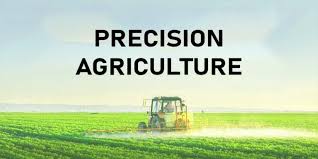INTRODUCTION
The goal of precision agriculture is to increase long-term, site-specific, and whole-farm production efficiency, productivity, and profitability while minimizing unintended effects on wildlife and the environment. Precision agriculture is an integrated information- and production-based farming system. It involves acting appropriately at the appropriate time, place, and place. It necessitates the application of modern technology like GIS and GPS satellites.
COMPONENTS OF PRECISION AGRICULTURE
• Yield Monitors: With the use of agricultural yield monitoring devices mounted on harvesting equipment, it is possible for a farmer to gauge yield and grain moisture in a field.
• GIS Software: A geographic information system is a piece of software that has a database that is used to enter, save, retrieve, analyze, and display geographically referenced geographic data for more in-depth field investigation.
• Field Scouting: It enables the producer to locate issues such as different soil types, insect infestations, insufficient fertility, and weed issues and to identify and record them.
• Computer Hardware and Software: The data gathered by the yield monitor and GPS must be processed by a computer to be provided to you in a manner that may be used, such as maps, graphs, charts, or reports.
• Water Management: Water management in precision agriculture includes the use of precision irrigation. In precision irrigation, it is necessary to identify the zones in the field that get watering at various rates and intervals.
• Variable Rate Technology: It entails putting decisions and information obtained for site-specific agriculture into practice. It consists of the equipment and systems for applying the crop production ingredients at the desired rate at the desired time and location.
BENEFITS OF PRECISION AGRICULTURE
1) Optimising Production Efficiency: the possibility to use differential management to optimize production amount at each site or within each “zone” may be made possible by detecting variability in yield potential.
2) Optimising Quality: the development of technology makes it possible to concentrate on improving yield quality. Management of the soil and nutrients can result in high-quality production.
3) Minimising Environmental Impact: utilizing integrated pest management (IPM) concepts when applying pesticides has the potential to lessen the environmental effect of pesticide use. Mapped pest populations are used to assess treatment options. The control system transmits rate information, and the sprayer responds by altering application rates.
4) Minimising Risk: Precision farming data can be applied at the farm level to enhance crop rotation, variety selection, and other risk-reduction techniques. Additionally, knowledge about crop growth throughout the season might assist you in making more informed market decisions.
5) Information To Act On: the greater capacity to identify crop production issues in the short term. Long-term data can be gathered and evaluated over time, giving you the chance to assess the effects of different management approaches on yield.
CONCLUSION
A thorough system created specifically to maximize output is known as precision agriculture. Precision agriculture can be utilized to boost production efficiency, improve product quality, increase the efficiency of crop chemical usage, conserve energy, and protect the environment by utilizing the main components of information, technology, and management.

